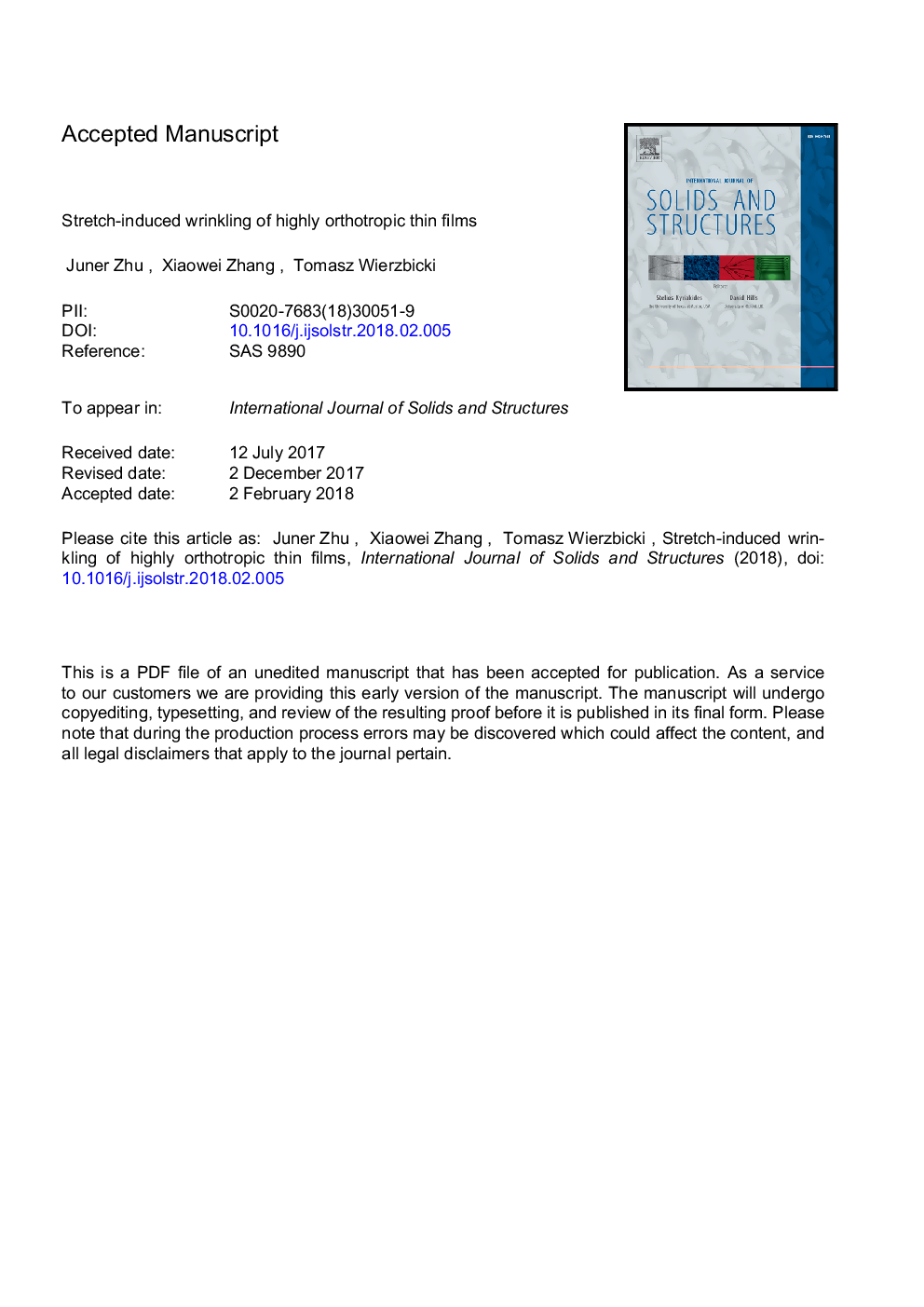| Article ID | Journal | Published Year | Pages | File Type |
|---|---|---|---|---|
| 6748349 | International Journal of Solids and Structures | 2018 | 36 Pages |
Abstract
Wrinkling is commonly observed when a rectangular plate is stretched with fully-clamped boundaries. Experimental results of a highly orthotropic polypropylene thin film show a counterintuitive phenomenon - wrinkles occur when stretched in the low-stiffness direction, while no wrinkles are observed when stretched in the high-stiffness direction. A comprehensive analysis of this problem is carried out using energy approach by decomposing the total energy into several components with different physical meanings. The mechanism of stretch-induced wrinkling is clarified and it is found that for the formation of wrinkles, the energy release in the transverse direction must exceed the energy barriers for bending, shearing, out-of-plane expanding, and stretching in the loading direction. Based on the energy analysis, a semi-analytical model is established and the Puntel-Deseri-Fried solution of critical stretch strain for isotropic materials is extended by introducing the coefficient of orthotropy r, which is the ratio of stiffness in the transverse direction to the loading direction. The criterion of the lower limit of r for wrinkling to occur is derived based on several simplifications. Both the extended solution of the critical stretch strain and the criterion of r are shown to be of satisfactory accuracy, as compared to experimental results.
Keywords
Related Topics
Physical Sciences and Engineering
Engineering
Civil and Structural Engineering
Authors
Zhu Juner, Zhang Xiaowei, Wierzbicki Tomasz,
